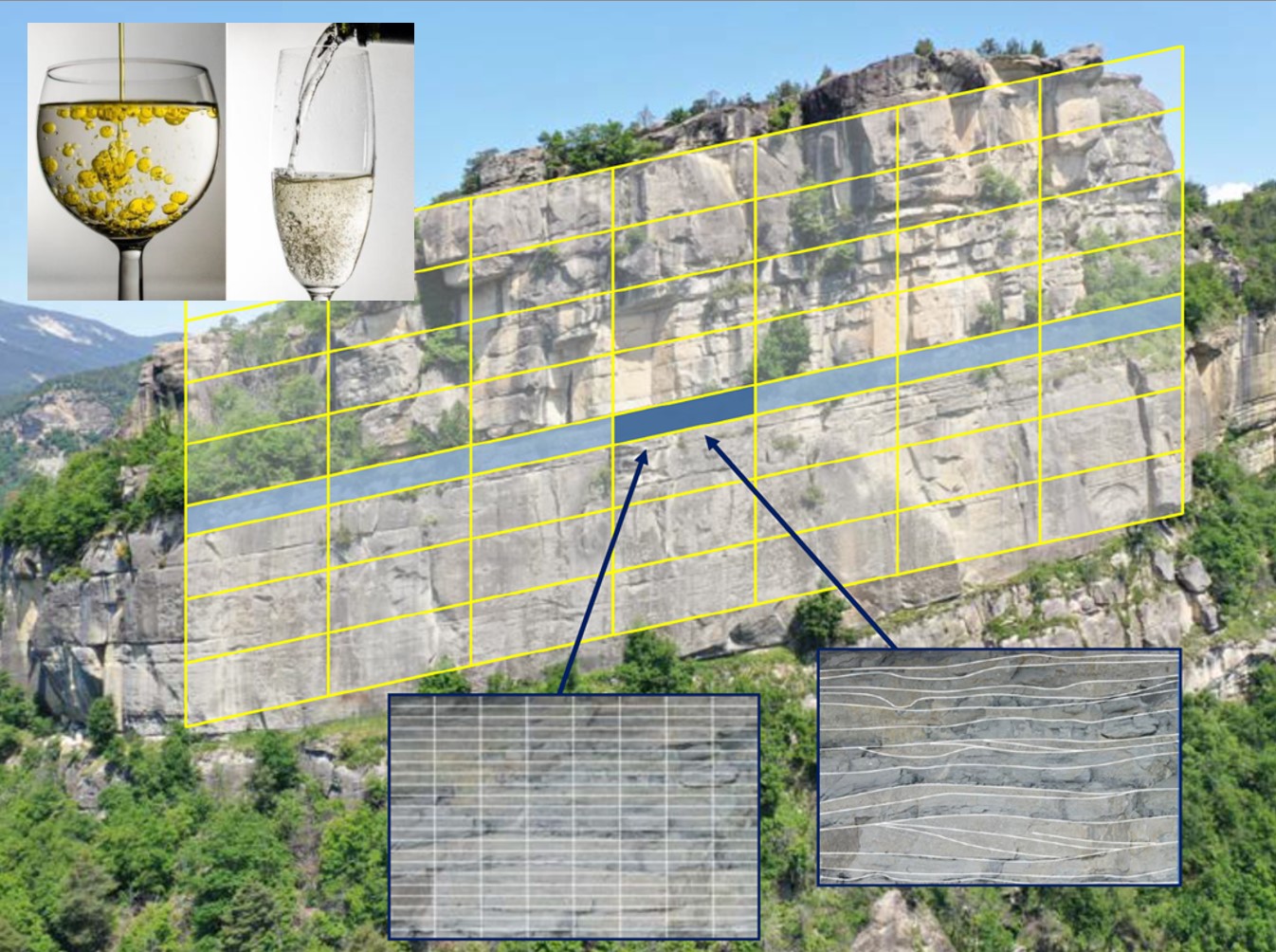In-person: Modeling strategies for CO2 injection

Ringrose & Bentley 2021 (Springer publishers)
Join us for a full day seminar on modelling strategies for CO2 injection organized by the FORCE CCS and IRM groups. This in-person event will take place at the Norwegian Offshore Directorate in Stavanger. The seminar will offer learning opportunities and examples on how to model CO2 injection in the subsurface from research institutions and case studies from industry.
Date: 14. October
Time: 09:00 - 15:00
Register by: 7. October
Location: Prof Olav Hanssens vei 10, Stavanger
Click here to register.
You will gain insight into recent advances, challenges and proposals for best practices for the subsurface modelling of CO2 storage as well as an opportunity to network and discuss with other professionals.
This event is ideal for industry professionals, researchers, authorities, students, and young professionals looking to expand their knowledge and network on modelling of CO2 in the subsurface. Don't miss out on this insightful and impactful seminar.
Program
08:30 Coffee & Registration
09:00 Welcome
Hilde Braut, Norwegian Offshore Directorate
09:20 Modelling for storage is harder than modelling for production
Mark Bentley / Ed Stephens, TRACS
Modelling for storage is harder than modelling for production (at least, it looks that way). The field is still new, a consensus on workflows has yet to become clear and it appears that we are lacking some necessary tools and skills.
Although we benefit from some deep domain experts, many CCS workers are new to the field and robust cross-discipline model designs for storage projects are a challenge.
This opening talk aims to highlight areas requiring particular attention when modelling for CCS projects, as seen from the perspective of practitioners more familiar with production, e.g. multi-scale modelling, the role of heterogeneity and the idea of cumulative residence, some of which be addressed by the following talks.
10:10 Break
10:30 Reservoir simulations of the main trapping mechanisms for CO2
Carl Fredrik Berg. NTNU
In this talk we will discuss strategies and challenges in reservoir simulations and upscaling of the main trapping mechanisms during CO2 sequestration. The trapping mechanisms considered are structural, residual, solubility and mineralization, and the focus will be on capabilities implemented within the OPM Flow software. We will briefly discuss thermal effects, effects of heterogeneity, water convection due to solubility trapping, Ostwald ripening and effective saturation endpoints.
10:50 Case Study - TBA
11:10 Questions
11:20 Lunch
12:20 Modelling strategies for managing pressure interference in multi-site CO₂ storage in large regional aquifers
Tor Harald Sandve, NORCE
We present a new multi-scale simulation framework that couples large coarse regional models with local site-scale models. This framework offers a scalable solution for managing pressure space in competitive, multi-site CCS environments and enables accurate modelling of pressure interference in large, faulted aquifers used for CO₂ storage.
12:40 Ways of modelling pressure beyond the storage site
Andre Morosov, Equinor
The presentation starts by reviewing the importance of connected pore volume and pressure response in subsurface assessments of CO2 storage.
Then in relates to available modelling methods, their limitations and fit-for-purpose modelling in decision making context
13:00 Question
13:10 Break
13:30 What we learned from modelling a large-scale migration assisted storage site
Jørgen Jørgensen, OMV
OMV has modelled a large-scale MAS. We would like to share some of our experiences and reflections regarding modelling approach for MAS opportunities, sensitivity analysis, presentation of modelling results and how modelling can be used to quantify risks.
13:50 Case Study: Modelling The Elephant Across Multiple Scales
Adam Butler, OpenGoSim
Limited information about the heterogeneity of a reservoir means that there is a large range of possible behaviours for geologically sequestered CO2. This is even more so the case for large open saline aquifers, where traditional grid resolutions would lead to a prohibitively large number of grid cells (10-100 million) and simulation times. One such site is the Elephant, a large open saline aquifer located in the Norwegian North Sea. For this case study we tackle this simulation challenge by splitting the modelling approach in two parts:
1) Near-Well Model: A localised reservoir model for the near-well region to investigate how the vertical structure of the reservoir affects the rate at which CO2 reaches the caprock and what fraction is trapped along the way,
2) Migration Model: The longer-term, along-caprock migration of the CO2 and the corresponding trapping processes that secure the CO2.
For this migration model we can make use of a reduced-physics approach to simulate this gravity-dominated flow more rapidly than with traditional full-physics simulators, which then allows us to consider ensembles of simulations and their statistical behaviour, as well as the sensitivity of the CO2 to different input parameters.
14:10 Questions
14:20 Closing Remarks
14:30 End
The organizing committee is in the process of finalizing the program which will be published in August.
We look forward to seeing you in Stavanger in October!
Organizing committee:
Carlos del Río Chamorro (Vår Energi)
Lars Fosvold (ORLEN Upstream Norway)
Sophie Haseldonckx (Norwegian Offshore Directorate)
Jørgen Jørgensen (OMV Norge AS)
Silje Skarpeid (AS Norske Shell)
FORCE seminars have previously been fully booked with waiting lists so you are encouraged to sign up as soon as you know you will attend.
Participation fees Stavanger:
FORCE members: Free
Non-members: NOK 1500,-
University/Students: Free
Important information:
You can register as a FORCE member and pay "FORCE member" price if you are an employee of a member company.
All FORCE member companies are listed here.
Payment is made online by credit card or VIPPS. Please note that no refunds will be given after you have signed up.
If you for any reason cannot attend the workshop, you are welcome to send a representative, just inform the FORCE Secretariat as soon as there are changes.
If you need to cancel your registration, please use the confirmation e-mail you received when you signed up.
If the seminar/webinar is cancelled, your payment will be refunded.
For other questions, please contact the FORCE Secretariat
Norwegian Offshore Directorate org.no: 870917732
Oppdatert: 22.07.2025
